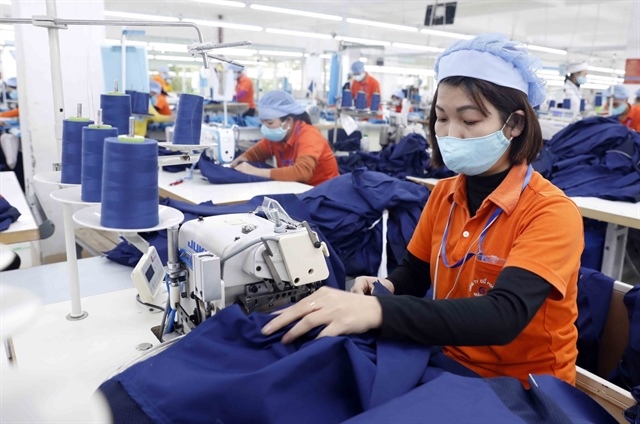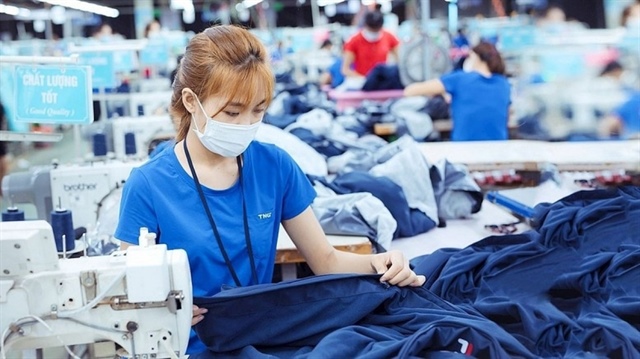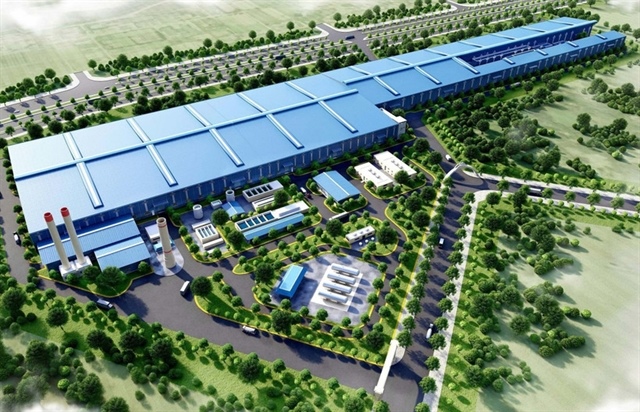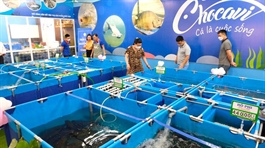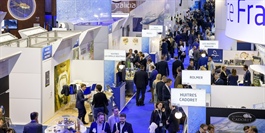Optimistic prospects for pre-engineered buildings in 2022
Optimistic prospects for pre-engineered buildings in 2022
With nearly 40-year experience in the pre-engineered steel industry, Adib Kouteili is one of the pioneers in introducing pre-engineered buildings in Vietnam. He and Sami Kteily co-founded PEB Steel Buildings Co., Ltd. (Pebsteel) in 1994 in Europe to provide solutions for pre-engineered buildings and steel structures. Kouteili, co-founder and managing director of Pebsteel shines a light on why such buildings will matter in 2022.
As a leading company in the industry, how do you assess the market?
Pre-engineered buildings were first launched in the 1960s in the US and then expanded to Europe. According to Global Industry Analysts, the worldwide market for pre-engineered building (PEB) reached $27.1 billion in 2020. It is projected that revenues from this market will reach $49.1 billion by 2026 with a compound annual growth rate of 10.1 per cent over the period.
High tensile steel is the dominant material in pre-engineered buildings. I am optimistic that despite being a niche market, PEB will become increasingly popular with an expanded market share in the future. Along with the product's advantages, industrialisation and urbanisation will also be instrumental in the industry's breakthrough.
Why do these two factors affect the prospects for PEB?
Firstly, PEB meets three requirements for industrialisation, namely durability, flexibility, and economic efficiency. According to statistical data, 80 per cent of warehouses worldwide are pre-engineered. With the advantages of quick execution, cost savings, easy expansion, and a lifep of up to 100 years, PEB has advantages compared to conventional reinforced concrete structures. PEB has become ever more popular in civil, public, and commercial works.
Pebsteel has left its mark across Asia, with projects including the highest palm-oil refinery in Indonesia at 68m, the 128m clear-p of the Lufthansa hangar in the Philippines, the longest warehouse in Thailand at 1km, and the 222,000 square metre Vinfast Haiphong car factory which was completed within five months.
In terms of industrialisation, public investment in infrastructure and private investment in civil, trade-services construction projects have been increasing. PEB won the hearts of investors, contractors, and architects thanks to its innovations with improved material, design, and construction techniques.
At Pebsteel, we constantly break our records, mirrored by the 14-story office building from a pre-engineered steel frame in Manila and the unique curved corridor for the Okada Manila hotel and resort complex.
Where do you see Vietnam in the PEB business now and in the future?
In 1993, I set foot in Vietnam for the first time. Very few investors realised that Vietnam was Asia’s sleeping tiger. We didn’t want to miss such an opportunity and started to invest and develop PEB in Vietnam.
In general, over 200 enterprises in the steel industry are creating nearly 750,000 jobs and about 85 per cent of construction works in Vietnam are using pre-engineered steel technology – in which Pebsteel has pioneered in Vietnam’s market.
Pebsteel mainly focuses on Vietnam. We have now seven large-scale factories, six in Vietnam and one in Myanmar. With its headquarters in Ho Chi Minh City, Pebsteel has 10 sales offices in six Southeast Asian countries as well as a partner network in 15 countries in Africa and the Middle East.
Moreover, Pebsteel has fulfilled over 6,000 construction works for clients in over 50 countries, gaining annual revenues surpassing $100 million.
How do you assess the prospect for this industry in 2022?
The last two years were a difficult period for all industries. The construction industry was not an exception, with its growth rate down to 6.76 per cent in 2020 and only 0.63 per cent in 2021, compared to 9.1 per cent in 2019, according to the General Statistics Office. However, according to Vietnam Steel Association, the steel industry overcame the challenges with a growth rate of more than 16 per cent in 2021.
PEB also had positive results and expected strong growth prospects this year.
What is Pebsteel going to do to stay ahead of the industry?
Pebsteel focuses on quality research and development to bring out optimal, sustainable, and safesolutions
We have made a long-term business strategy until 2030. In early 2022, Pebsteel completed its new brand re-recognition, asserting that it is a leading company when it comes to PEB with a series of sustainable and safe solutions. Our website, logo, and slogan all wear a new cloak to fully convey our brand’s spirit and vision – aiming at corporate success with all clients, partners, and staff.
Also, Pebsteel continues to strongly invest in quality research and development. We constantly create pioneering ideas with improved products such as the PebHybrid® frame, special heat resistant material PebINSUL™, cladding sheet PebWall®, liner sheet PebLiner™, and more. Besides this, our annual total production of 100,000 tonnes and high reserve of 15,000 tonnes facilitate Pebsteel to deal will large-scale projects.
With the support from our two major stakeholders from Japan (Nippon Steel and Okaya & Co., Ltd.) since 2009, we have set a new standard for PEB through effective solutions, dynamic teamwork, and committed partnerships. With eco-friendly materials and energy-saving design, Pebsteel proudly pioneers green buildings meeting LEED® standards as well as helps partners successfully operate their factories.
Moreover, we conform to the latest international design rules when designing and executing buildings. Multipurpose materials at Pebsteel imported from Japan, South Korea, and China meet American Standard Testing and Material standards.
With more than 1,400 experienced workers and engineers, we undertake to bring our client services far above their expectations and proudly pioneer leading quality standards of PEB in Vietnam.



